The Dons salvaged a point against Dundee United on Sunday, dropping to fourth place in the SPFL. Both goals came from Kevin Nisbet, via Alexander Jensen.
If there is one benefit with stretching my deadlines, it is the opportunity to consume more Aberdeen ‘content’ as I process my thoughts from the fixture/find the time to rewatch the game. This week, there was another interesting discussion on inside forwards versus wingers on the Here We Go podcast. Andrew Budge also covered the crossing theme from Sunday’s game. I’ve stolen both ideas, and this is a hybrid of both topics.
Wingers and Full Backs
Sometimes I forget what I write, so here are two snippets from the last couple of weeks to jog my memory and yours. Firstly, the Dunfermline recap (there’s a point to this, other than me just showing off these fancy graphics).
And then from last week against Kilmarnock:
So we’ve got this season-long debate about the most effective attacking shape, illustrated somewhat simply below.
The addition of Alexander Jensen, who appears to play higher and wider than Nicky Devlin at right back, has reinforced the structure on the left. Again, it’s not as clean as this. There have been asymmetrical elements at times, especially when McGrath was playing on the left side and with Clarkson at the number 10 position; he was not always in a centre-forward position. But I think it illustrates what the two halves on Saturday looked like to some degree.
And it’s the first half that I’m most interested in as this would seem to be Jimmy’s plan A?
No Shots on Target
On Sunday, Aberdeen started well, were energetic, got the ball forward quickly, and did a good job of recovering possession.
Then we had United’s first goal and a couple of attacks before the Dons got back into things. And finally, United again made the most of their set-play opportunities at half-time to go two ahead.
Most of the stats for the Dons reflected a decent performance. Aberdeen made the majority of their passes in the attacking half (121) and had 35 final third entries.
It was much improved from the Kilmarnock game a week earlier. Yet on the second most important stat (after goals and maybe xG) - Shots on Target, the Dons numbers were just as dismal.
Even the 8 shots are somewhat misguiding, as four of those came from the stramash on 33 minutes, resulting in Keskinen’s deflected shot going out for a corner.
From Wide Deliveries
I decide to take a look at goals for Aberdeen, which have come via wide deliveries. See below a map of assist locations and a corresponding key to each number.
This only includes SPFL goals. Scorers in bold were not the original receiver of the cross/cutback, but the chance was certainly generated from this type of play, e.g. Gueye v Motherwell. Generally, these goals came from the second contact. Worth noting in terms of the left side especially.
Overall, I count 18 of Aberdeen’s 28 open-play goals as coming from a wide delivery (64.2%). Here’s the breakdown on the types of cross. These are my definitions, I hope they make sense.
As the data above and the pass graphic seem to show, cutbacks are the most successful avenue for goals, with those finding a player around the penalty spot. This all corresponds to what we saw at the start of the season, the literature on the best xG value chance, and Jimmy’s overloads in the box theory.
One simple observation would be that since Duk has left, we have lacked someone on the left side to penetrate on the run. Keskinen showed some promise on Sunday with the great run he had which set up an opportunity for Gueye in the second half.
Here’s the cross map (via Wyscout) from Sunday.
The black lines found an Aberdeen player, the grey lines, a United defender, and the blue lines were claimed by Jack Walton. There are very few examples of an Aberdeen player getting to the byline and cutting the ball back.
This may be something we can attribute to good defending from United, although we have to consider the knock-on effects of this. If two men choose to cover Shayden Morris then it frees up the space for the supporting full back as was the case with the second goal. But for this episode, I’d like to look at the full backs, how they did in proving width in the first half in regards to end product and then look at the affect of the inside forwards in creating overloads in the box.
Jensen and MacKenzie
I’ve looked at a couple of examples that show the two full-backs receiving the ball high up the field in wide areas during the first half.
United and Jim Goodwin are due credit as their wide players worked really hard to match the Aberdeen full-backs run for run, reducing the amount of time and space they had to deliver crosses. MacKenzie is fast enough, and Jensen seems to be quite quick too but neither are Jayden Richardson fast. Ergo we’re relying on some lazy wingers to maximize the space that may be vacated by full-backs coming inside to mark our inverting wingers.
1. MacKenzie Aerial Cutback 2nd Minute
There are a few things you could look at here. MacKenzie could drive to the line with more aggression and perhaps look to cut it back more for Gueye on the edge. United are defending in numbers inside the box. In his defence, he does put the ball in an area for strikers to attack. It’s not the worst cross in the world.
Jensen Floated Centre 7th minute
Again here, fine margins. Jensen has limited options due to the pressure on him and gets a decent ball in, although he can’t beat the first man. If I had one complaint, it would be the lack of intensity and variation from the other attackers’ runs. But again, United defended their box well, positionally and numerically.
MacKenzie Low Cross 8th minute
All of these examples show the ‘system’ in action. An inside forward creating space for the full-back. Here, we have a lovely slide rule pass from Okkels into MacKenzie and a nice camera angle to show his options.
My initial thought when viewing this was that MacKenzie has to try and get the ball in the highlighted area and hope either Nisbet or Jensen can get on the end of it. He does exactly that. The yellow dot is where the ball was cleared from.
You can make your own conclusions. Possibly some more pace on the ball from MacKenzie, maybe a little closer to the six-yard line? Should Nisbet go in front of the defender instead of in between the two? Why is Keskinen not attacking the box as well?
Jensen cutback 27m
This one is a little different. Nilsen plays a switch to Jensen, who is in space on outside. Two United defenders have been dragged in by Keskinen.
It’s not a bad idea; Keskinen just doesn’t quite have the technique to get it down and get a shot off in such a tight area.
There were a few other situations when the ball found its way to one of the full-backs, but they could not get a cross away or were not able to pick out a man.
What surprises me is that neither player seemed willing to cutback on to their weaker foot and float one in to the back post, especially with Gueye in the middle.
I am interested to see how Jensen progresses in this position. He seems like a good crosser from deeper areas, but I don’t know if he’s going to be the man to the endline and deliver cutbacks.
Greame Shinnie did a good job when he came on, although by that time the shape was a little different. I don’t know if Shinnie could be expected to make those ‘lung-bursting’ runs on a consistent basis over 90 minutes. Maybe we’ll find out in the weeks ahead.
The team is not going to score from every cross. According to Josh Williams, you tend to score once every 45 crosses. On Sunday, the Dons had 54.
Central Four
The main perceived benefit, in addition to creating potential space out wide, is that Aberdeen should in theory, have more players ‘crashing’ the box. As we can see from the images, it seems the team needs to do some work on timing their runs or understanding what the full-back is going to do. Anytime there’s a sniff of the ball going wide, Gueye should be licking his lips. We really need him to get his head on the ball in the box on a consistent basis to justify the rest of his play.
That’s why I think Morris would be preferred by the strikers as there’s likely only going to be two scenarios when he picks up the ball:
Beat the defender and get to byline: In this case I think you’re looking at something like one striker attacking the ball across the face, the other holding their run at the penalty spot. The first inside forward maybe attacks the near post (can dummy if shot not perfect) and other would attack the back, ready for anything in the air or that bypasses everyone else. See diagram below.
Morris has two men on him and so opts to go back to full back. In which case, players can recycle their runs for a floated cross with maybe one offering to feet. See the diagram below.
And I think that’s another understated element of Morris being on the pitch. The fact he can provide a consistent reference point high up the field in which pre-rehearsed movement patterns can be applied.
In the other cases, I think there’s some familiarity needed amongst the attacking cohort as players come to know each others tendencies and strengths. And as we’ve said before, sometimes it is easier to penetrate through dribbling versus passing.
Saturday
The Dons we would expect will have more of the ball on Saturday and need to be patient, just like they were in the league cup game.
How will Jimmy approach the game? Plan A or Plan B? Whatever he decides, expect those wide deliveries to be key if we are to return to Hampden for our fourth consecutive Cup semi-final.
COYR


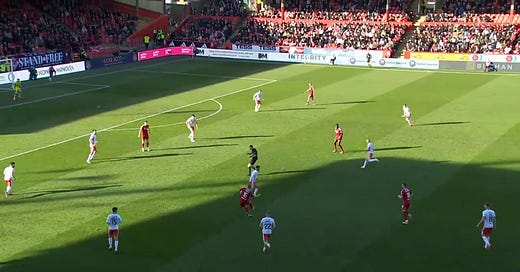




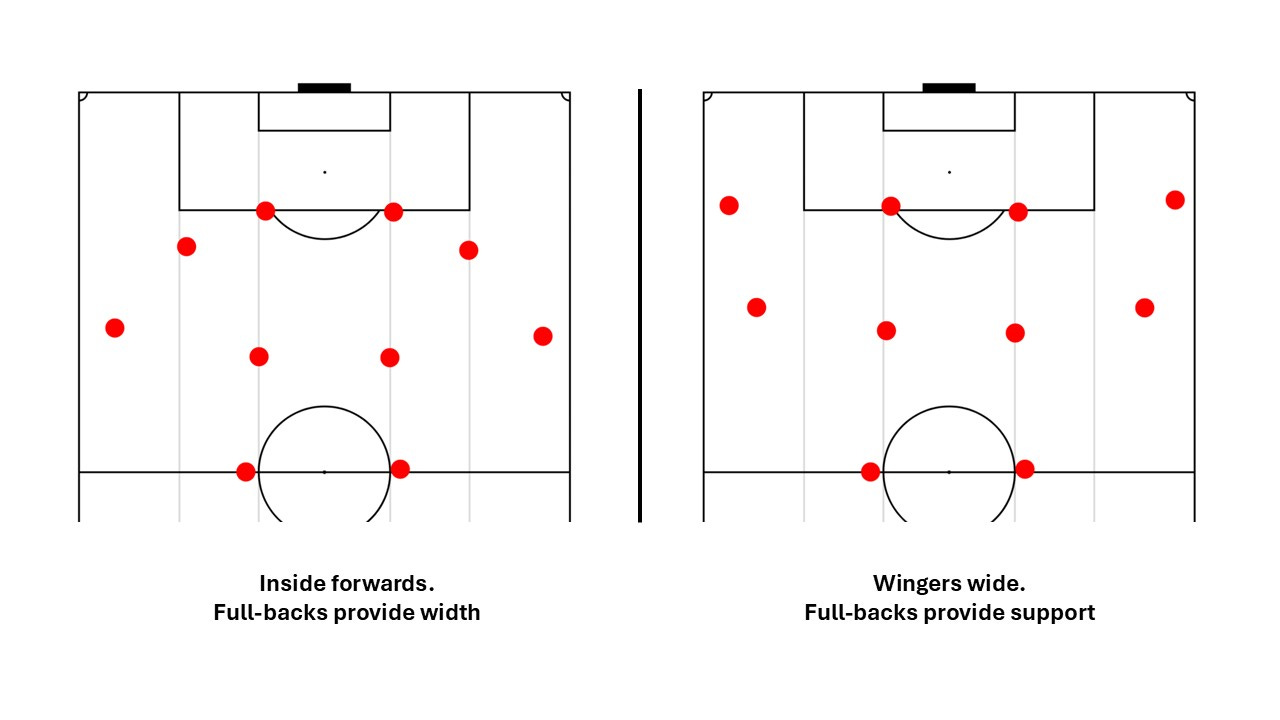
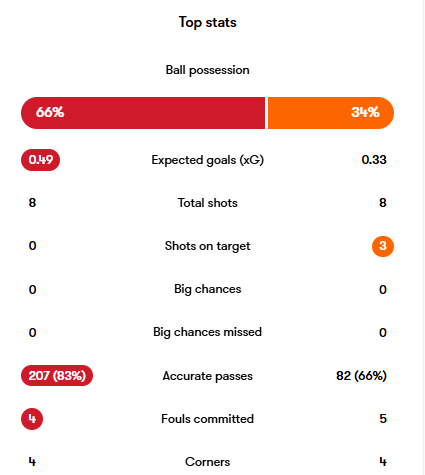

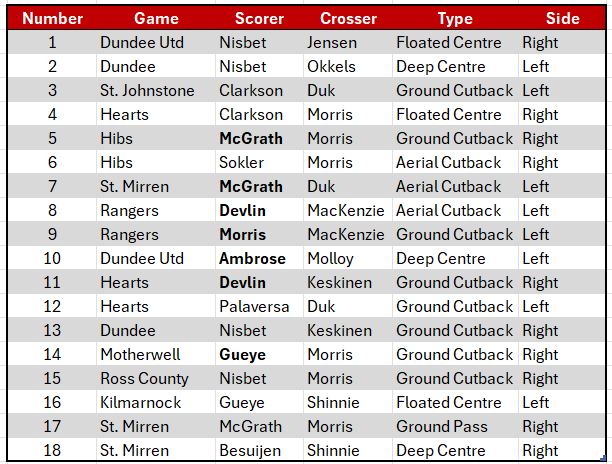


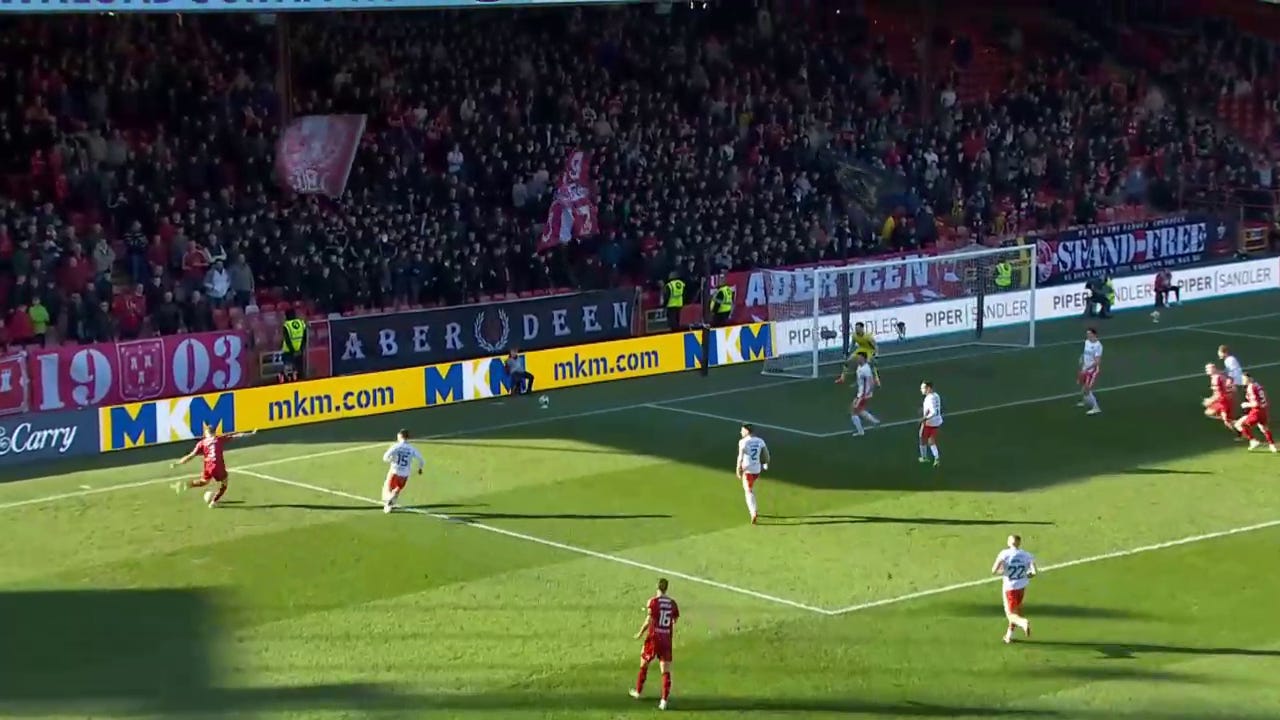
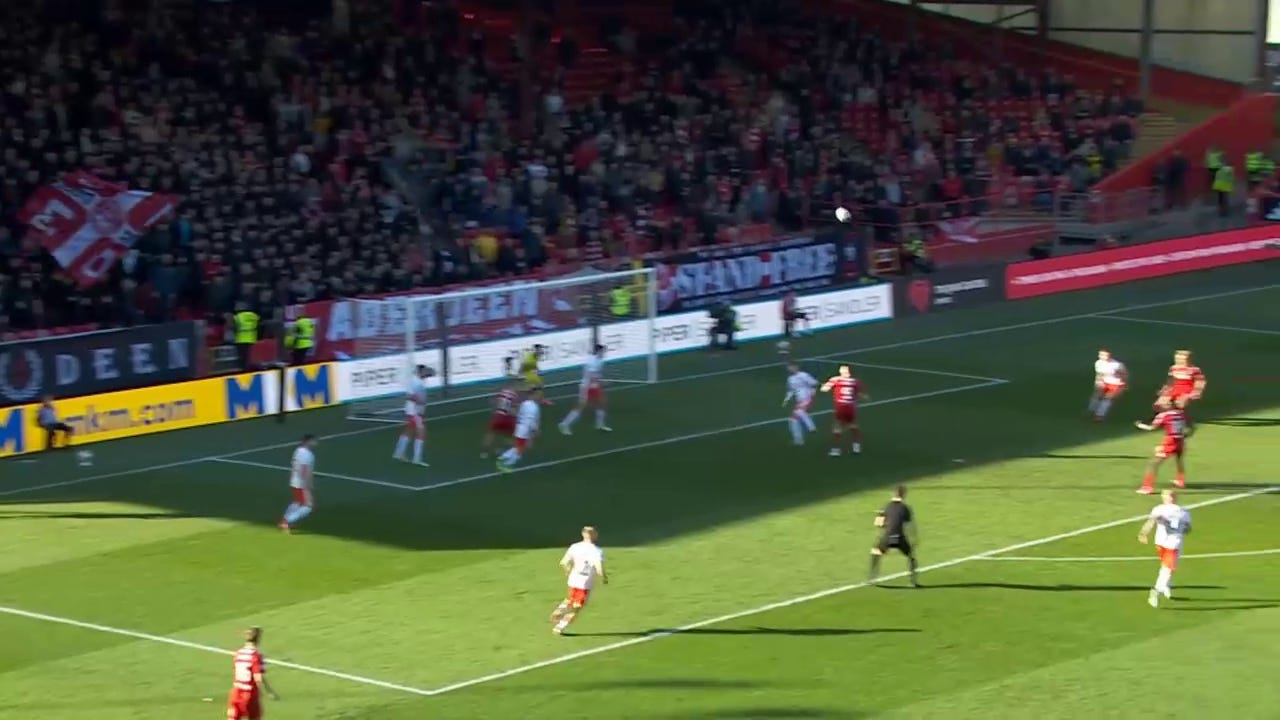




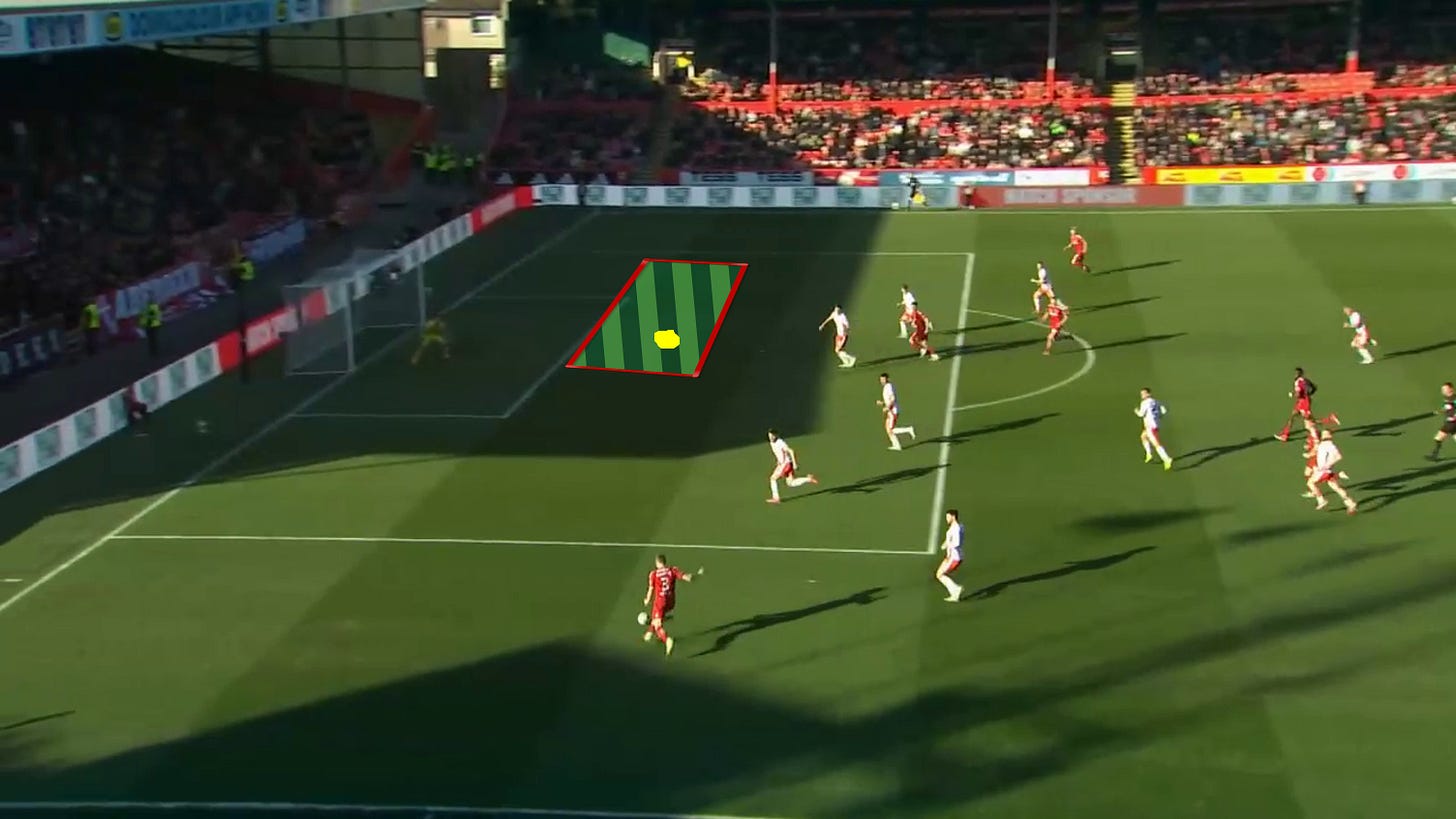

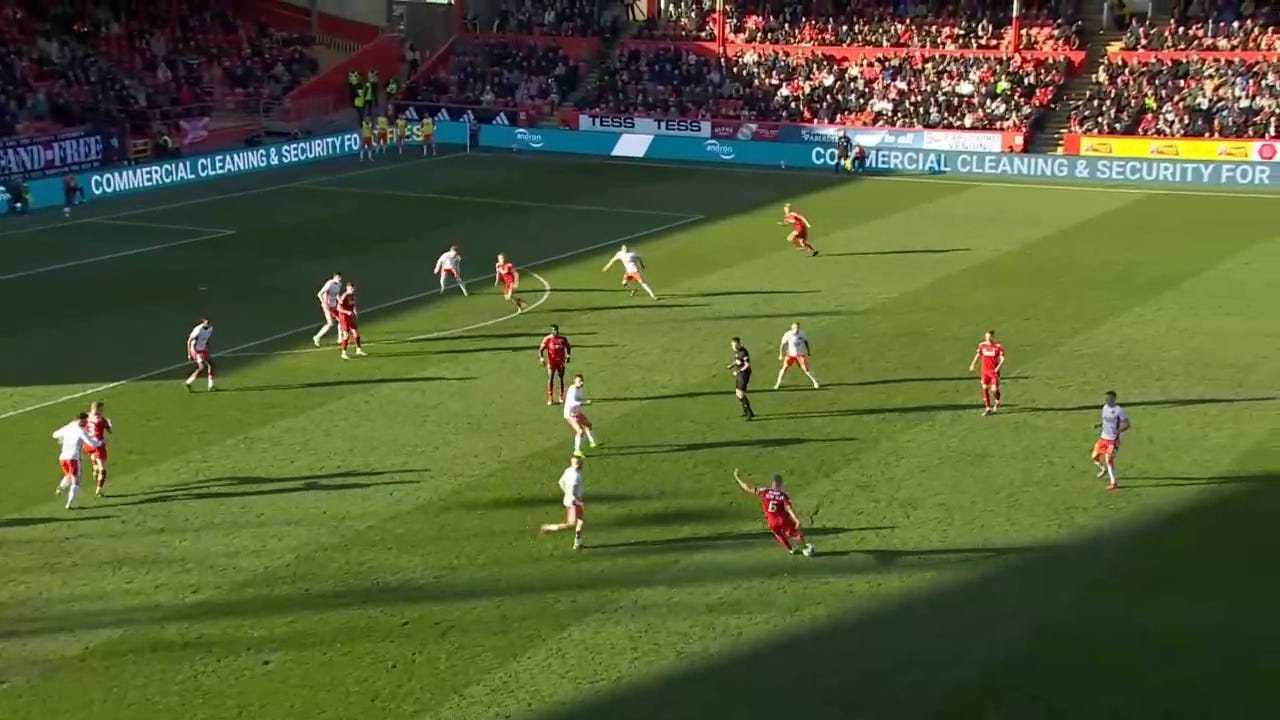
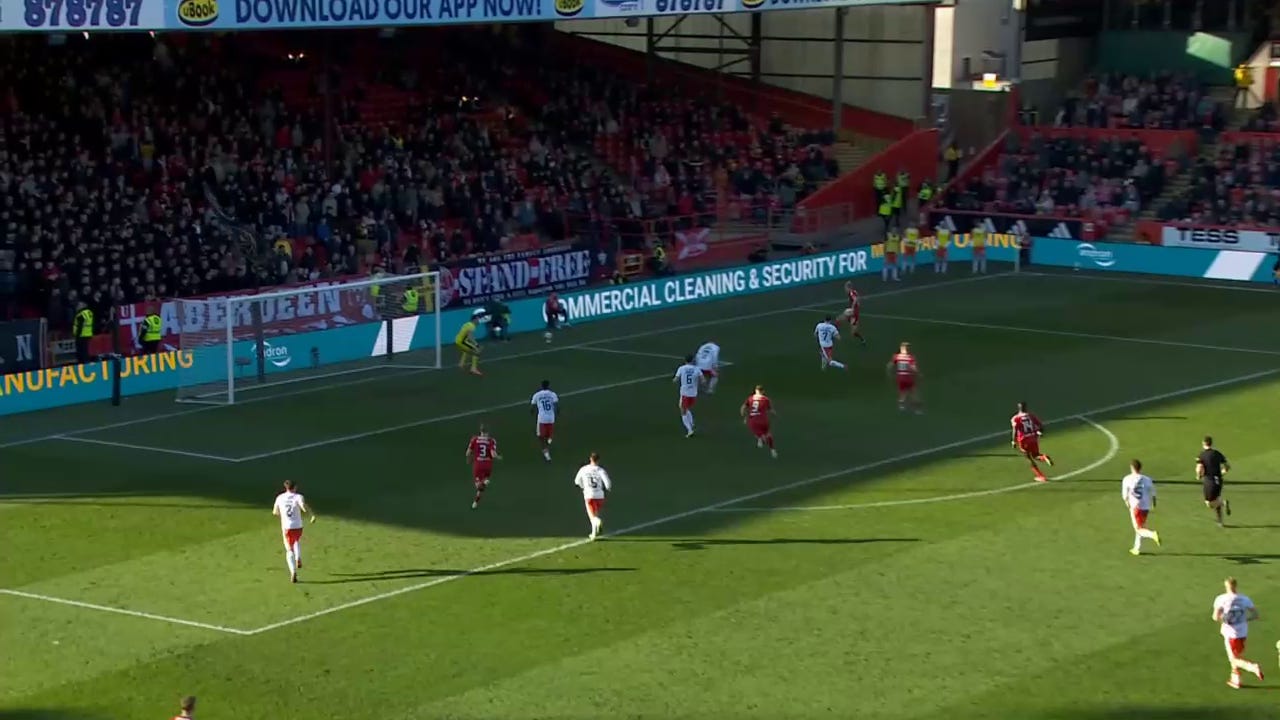


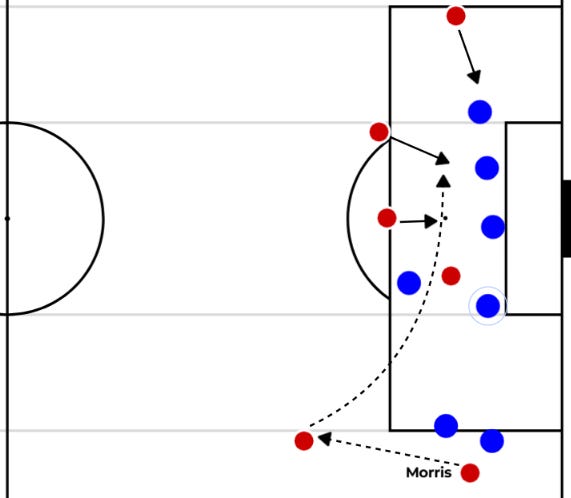
Very good read. At present I'm not that keen on plan A. Okkels would appear key to that so I can understand Thelin sticking with him but he's just not doing it. I'd rather Morris is given a few starts starting tomorrow.